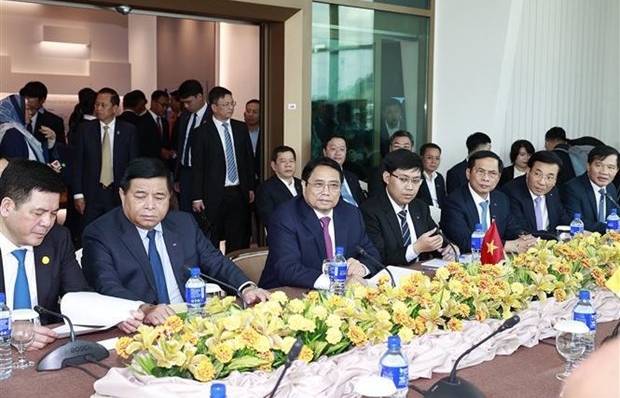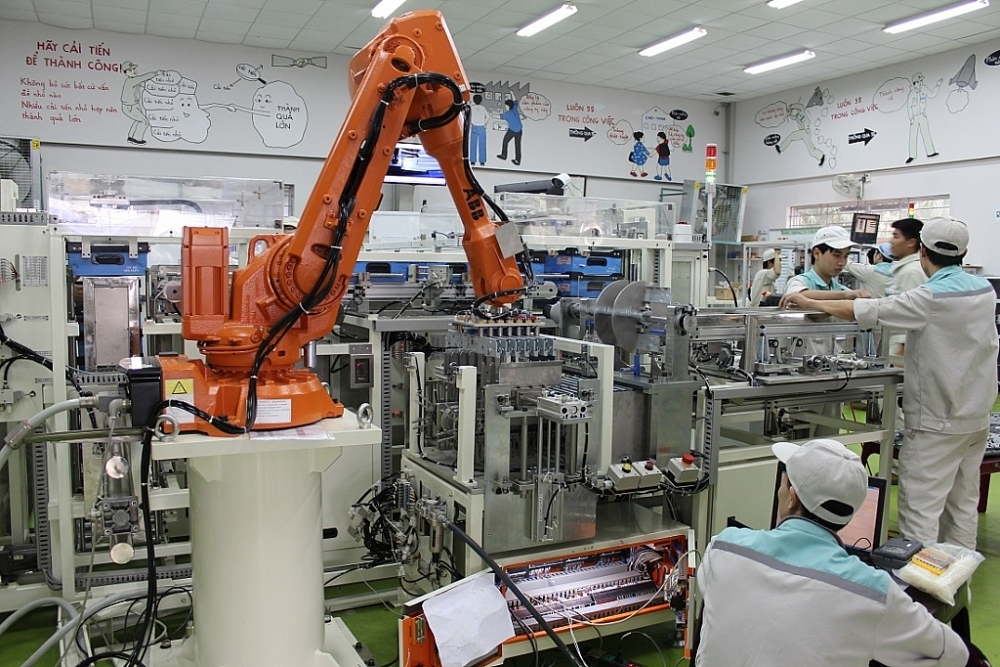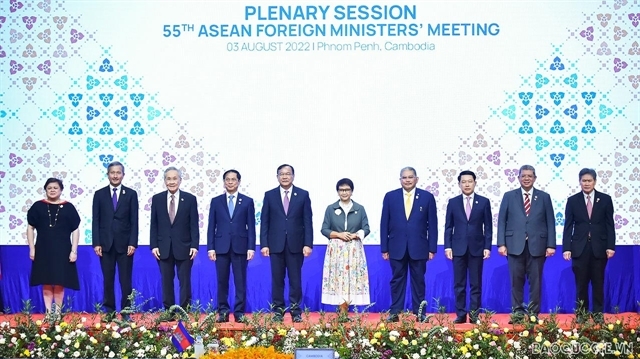Energy sustainability remains controversial
Coal-fired power has been considered a key source in ensuring energy security (Photo: Hong Quang)
Some US$140-150 billion is needed to expand the country’s current power system as mapped out in the national power development plan by 2030, according to Le Van Luc, deputy head of the Electricity and Renewable Energy Authority under the Ministry of Industry and Trade (MoIT).
The government has given the green light to private investors to set about improving power output, sources, and transmission following changes to a number of rules and regulations in the hope of mobilizing capital for power development.
Coal-fired power currently makes up 37-38% of the country’s total power output and acts as a key source in helping energy security. This figure is projected to rise to 49.3% by 2020 and 53.2% by 2030 under the revised Power Development Plan VII (PDP VII).
Thermal power plants have emerged as a second efficient source of electricity, just after nuclear power. There remains little potential for the expansion of hydropower projects as the total capacity of nationwide hydropower plants has been approaching a maximum level of 25,000 MW.
Furthermore, drought and other negative effects of climate change are forecast to impede the exploitation of hydropower. It is therefore only possible to generate an additional 2,000 - 3,000 MW from potential hydropower plants.
Luc exemplified his point of view that a coal-fired power plant designed with a capacity of 1,000 MW could yield some 7 billion kWh a year. This would nearly double the output of a hydropower station at the same capacity, and more than triple that of wind and solar power farms whose capacity is sensitive to weather change.
Despite public criticism of the environmental impact and some provincial authorities’ refusal to carry out coal-fueled power projects, the implementation of coal-fired schemes was still advocated by two MoIT Deputy Ministers, Cao Quoc Hung and Dang Hoang An.
The two deputy ministers voiced their support, along with many activists, at a series of recent workshops to facilitate plants installed with state-of-the-art and eco-friendly equipment.
Capital remains an issue
Luc from the Electricity and Renewable Energy Authority revealed that no additional thermal power projects have been added to the PDP VII since it was issued in March 2016.
He further said that the implementation of several projects previously listed in the PDP VII had been deferred due to a shortage of capital as well as poor performances and shortcomings in execution by investors and contractors.
Thai Binh 2, Long Phu 1, Song Hau 1, Cong Thanh, and Hai Duong topped the list of delayed coal-fired power projects.
He attributed the delayed progress of some coal-sourced power projects under the build-operate-transfer (BOT) investment format to concerns over the risks of not attaining payback.
Foreign investors remain eager to tap into the Vietnamese power market if the Government can offer guarantees on exchange rates, the run-time, and the maximum and minimum capacity of coal-fired power plants before they are transferred to the receiver, he told VOV Online.
According to the Vietnam Energy Association (VEA), investors are lingering on BOT projects as power prices are lower than expected.
The VEA stated in a report sent to Party and State leaders last month that average power prices now stand at some 7 US cents/kWh, much lower than the level of 11 US cents observed in the region.
Low prices could lead to tremendous risks in ensuring returns since eco-friendly power plants are installed with cutting-edge equipment which is imported and valued at billions of US dollars.
The shortage of capital has also emerged as another issue, said VEA chairman Tran Viet Ngai, citing MoIT statistics as saying that US$148 billion is required to carry out power expansion between 2016 and 2020 in accordance with the PDP VII. The figure is forecast to double to US$296 billion for 2020 - 2030.
Luc assumes that the delayed coal-fired power plants mean that a shortage of electricity is imminent. Coal-fired power projects are expected to come into use between 2016 and 2020 and could generate a combined capacity of 8,000 MW, only equal to 58% of the figure planned for the reviewed period under the PDP VII, he added.
Those set to become operational in the 2021-2025 period are expected to produce an estimated 21,600 MW, and 8,700 MW for the 2026 – 2030 period.
Ideal path for power sustainability
Adam Ward, Country Representative for Vietnam at Global Green Growth Institute (Photo: Hong Quang)
Vietnam can seek to meet its fast growing electricity demand by scaling up renewable energy and embarking on energy efficiency measures, Adam Ward, Country Representative for Vietnam at the Global Green Growth Institute (GGGI), told VOV Online.
The country should harness its enormous renewal energy potential - solar, wind and biomass - which under the right policy environment, can come online soon.
He highlighted the amazing results China has had with renewable energy, installing 24.3 GW of solar in the first half of 2018 alone. This represents over a quarter of the total amount of power Vietnam needs to install by 2035.
GGGI analysis indicates that bagasse-fired power co-generated from sugar production could make a significant contribution to the national power output (Photo: Hong Quang)
GGGI’s recent analysis indicated that with the right policies, the Vietnamese sugar industry can generate 4,300 GWh of electricity, enough for 630,000 households per year.
Energy efficiency measures have great potential too. Some schemes should be elaborated to promote waste heat recovery in cement production, as well as energy efficient lighting and appliances in government, commercial and residential buildings.
These will derive huge benefits in getting more for less and stopping unnecessary wastage of electricity production. Estimates of the potential of energy efficiency showed that Vietnam could save up to 30% of electricity consumption, equivalent to seven coal - fired power stations.
Historically, government guarantees have been given to BOT developers for coal - fired power projects. When it comes to solar, wind and biomass projects, the ideal path is to strengthen the power purchase agreements (PPA) and launch the direct PPA (D-PPA), Adam suggested.
If the PPA is improved, this would allow companies to sign attractive long term agreements to sell electricity to the Vietnam Electricity group (EVN) to build, operate and own the projects, thus removing the need for a government guarantee.
In addition, when it comes to the D-PPA, this enables renewable energy developers to sell power directly to other companies, again stripping out a government guarantee.
It would greatly incentivize investment in renewables if the Vietnamese Government implements attractive feed-in-tariffs (FiTs) to make the cost of renewables competitive, which have been done for solar and wind.
“The Government should conclude and launch the D-PPA as soon as possible, this will enable private energy developers to produce and sell power directly to other private companies. Of note, Heineken, Nike, and Puma have all made commitments to get their electricity from renewable sources.”
In parallel with maximizing renewables, the VEA has embraced the expansion of coal and gas-fired power as a key pillar in helping handle the risk of electricity shortages and assure national energy security.
The VEA assumed that thermal power plants, including those operated by liquefied natural gas could yield a stable capacity. It also predicted a scenario where coal-fueled power stations could contribute 60 - 70% to the total power sources while those fired by gas would account for 30 - 40%.
Upon addressing a recent conference reviewing the EVN’s performance throughout 2018, Deputy Prime Minister Trinh Dinh Dung emphasized the risk of a lack of power for domestic consumption as the largest challenge facing the power sector.
The total capacity of Vietnam’s power system currently stands at 48,000 MW. However, the country will need 90,000 MW by 2025, 130,000 MW by 2030, and even more into the future.
The Deputy Prime Minister urged the EVN and the power sector at large to maximize efforts to increase power sources in conformity with the capacity of transmission system, thus ensuring the supply of power for domestic production and living.
Related News

PM holds roundtable discussion with Brunei energy, oil and gas firms
17:55 | 11/02/2023 Headlines

Saving energy for sustainable business development
10:42 | 13/08/2022 Import-Export

ASEAN foreign ministers highlight cooperation in health, maritime and energy
15:30 | 04/08/2022 Headlines

Adding power to Customs proposed
14:36 | 29/07/2022 Customs
Latest News

Focusing on the "readiness" factor waiting for foreign investors in the high-tech field
20:14 | 18/05/2024 Import-Export

Exploiting the potential of Dong Nai's largest seaport
20:12 | 18/05/2024 Import-Export

Hanoi calls for investments in six urban areas projects
20:11 | 18/05/2024 Import-Export

The food industry aims to green packaging
09:56 | 18/05/2024 Import-Export
More News

"The key" to growth motivation for enterprises
09:55 | 18/05/2024 Import-Export

Exports of four localities achieve tens of billions of USD
20:26 | 17/05/2024 Import-Export

Rapid greening of the logistics sector to avoid being "eliminated"
20:24 | 17/05/2024 Import-Export

25 out of 28 northern localities report positive industrial production
20:22 | 17/05/2024 Import-Export

Dong Nai remains magnet for foreign investors
20:18 | 17/05/2024 Import-Export

Vietnamese steel affirms position in world market
20:16 | 17/05/2024 Import-Export

Five commodities worth billion dollar exported to China
07:40 | 17/05/2024 Import-Export

Promoting reforms and supporting businesses to spread farther
07:39 | 17/05/2024 Import-Export

Five groups of billion-dollar export commodities to China
09:58 | 16/05/2024 Import-Export
Your care

Focusing on the "readiness" factor waiting for foreign investors in the high-tech field
20:14 | 18/05/2024 Import-Export

Exploiting the potential of Dong Nai's largest seaport
20:12 | 18/05/2024 Import-Export

Hanoi calls for investments in six urban areas projects
20:11 | 18/05/2024 Import-Export

The food industry aims to green packaging
09:56 | 18/05/2024 Import-Export

"The key" to growth motivation for enterprises
09:55 | 18/05/2024 Import-Export





